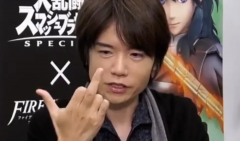This is my thought on any big mechanical change that would require some major, universal rework across the roster.
To casuals, fighting games are their casts. No, casuals do not buy fighting games for story modes alone. Those are too anemic to stand up on their own if you're not a fan of the characters or the underlying game going in. The roster is the action figures, the story mode is a plastic play set. If a casual fan cannot differentiate between the mechanics of two fighting games, which is often the case if two games are generally similar, then the characters make up the difference.
Yes, other fighting games frequently cull and reinvent their veterans, but those games aren't Smash. Street Fighter, Mortal Kombat, Tekken, and especially Rivals of Aether are all aimed at a much specialized audience that is much more intimately familiar with how the genre works. There's an expectation that this isn't your first rodeo.
And, to be candid, is following the mainstream fighting game industry really that great of an idea? These games are slowly becoming infamous for being half-finished products with progressively smaller player bases that are increasingly beholden to being continuously nickeled and dimed to make up for inflating budgets and decreased sales of the base game. The origin of things like the $5 Mishima Dojo isn't solely corporate greed, it's an attempt to find alternate models of monetization to keep major studios interested in the genre.
Any mechanical change has to make up for the utility lost from characters being removed from the judgment point of a casual fan. Yes, a thread full of people who have put thousands of hours into Smash is going to get a lot more out of something like an aerial Smash Attack or reworking many of the 64, Melee, and Brawl vets, but the general public isn't as fatigued. I mean, Ultimate still sells. That means casuals feel this entry at least modern enough to be a commercially viable $80 game. Things aren't nearly as stale as we may perceive.








